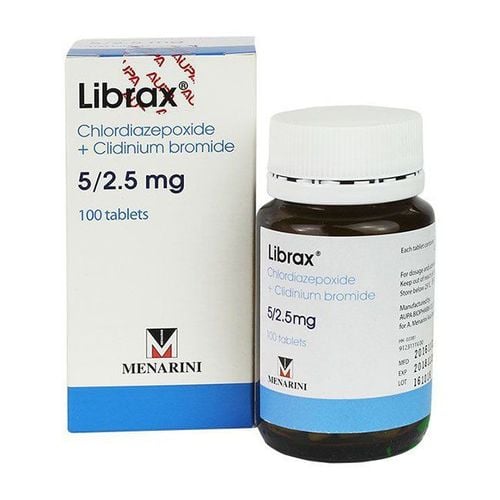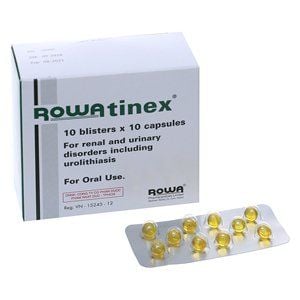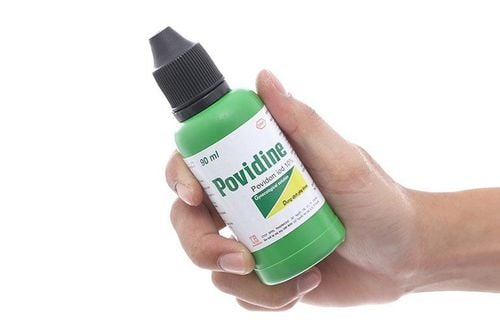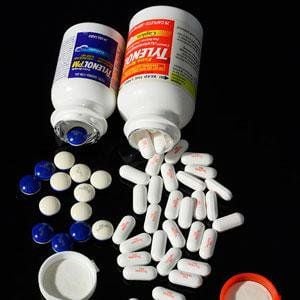Peptic ulcer and gastroesophageal reflux disease (GERD) are two of the most common diseases today. The treatment process is also quite difficult and relies the most on the group of proton pump inhibitors with the typical representative being Esomeprazole in Emanera. So what is Emanera and what does Emanera treat?
1. What is Emanera?
What is Emanera? Emanera is manufactured by KRKA, D.D., Novo Mesto with Esomeprazole as the main component, so it is commonly indicated in the treatment regimen for esophageal and stomach diseases. Emanera is available in 20mg and 40mg dosage.
2. What does Emanera treat?
Emanera is indicated for use in the following cases for children over 12 years old:
Cases related to gastroesophageal reflux disease (GERD) such as: Esophagitis caused by reflux; Prevention of
recurrent esophagitis; Treatment to reduce symptoms.
Use of Emanera in combination with antibiotics to eradicate Helicobacter pylori.
Indications of Emanera in adults:
- Related to gastroesophageal reflux disease:
- Treatment of esophagitis caused by reflux;
- Prevention of recurrent esophagitis;
- Palliative treatment of GERD;
- Emanera combined with antibiotics to eradicate Helicobacter pylori:
- Heal ulcers caused by H. pylori;
- Prevent recurrence of gastric ulcers in patients infected with Helicobacter pylori;
- Patients using NSAIDs for treatment with Emanera for the following purposes:
- Prevent gastric ulcers, especially in patients at high risk of ulcers.
- Zollinger-Ellison syndrome and diseases that cause increased gastric acid secretion;
- Maintenance therapy after preventing recurrent upper gastrointestinal bleeding from peptic ulcers.
3. Pharmacological properties of Emanera
The active ingredient Esomeprazole in Emanera binds to the H+/K+-ATPase pump (or proton pump) in the stomach wall cells, thereby inactivating this enzyme system and ultimately inhibiting the final step of HCl secretion into the stomach lumen.
Emanera is rapidly absorbed by the oral route, with peak plasma concentrations achieved after 1-2 hours. The bioavailability of Esomeprazole increases with the oral dose and with repeated doses, reaching about 68% with a 20mg oral dose of Emanera and 89% with a 40 mg dose.
Food can affect the absorption of Emanera, but does not significantly alter the effect of reducing gastric acid secretion. About 97% of the dose of Esomeprazole is bound to plasma proteins. Emanera is metabolized primarily in the liver by the cytochrome P450 enzyme system, isoenzyme CYP2C19 with a half-life of about 1.3 hours.
4. Dosage of Emanera
Regarding the use of Emanera, patients should note the following:
- Take Emanera at any time of the day;
- Can be taken before or after meals;
- Patients should swallow the entire Emanera tablet with water, do not chew or crush when taking.
The recommended dosage of Emanera is as follows:
- Esophageal ulcer caused by GERD: Emanera 40mg/day for 4 weeks, can be maintained for an additional 4 weeks if inflammation persists;
- Maintenance treatment when esophagitis has healed: Emanera 20mg orally each day;
- Treatment of GERD symptoms: Emanera 20mg orally each day, for about 4 weeks;
- Treatment of Helicobacter pylori: Emanera 20mg combined with 1g Amoxicillin and 500mg Clarithromycin, taken orally twice a day for 7 days;
- NSAID-induced gastric ulcers: Emanera 20mg orally each day for 4 to 8 weeks;
Prevention of ulcers in patients at high risk of gastrointestinal complications, but mandatory use of NSAIDs:
- Take Emanera 20mg daily;
- Zollinger-Ellison syndrome: Start with Emanera 40mg, twice daily. Then adjust the dose according to the patient's response and continue treatment as long as there is a clinical indication.
- Dosage of Emanera in some special populations:
- Patients with renal impairment: No dose adjustment is required, however, due to limited experience with the use of Emanera in this population, caution should be exercised;
- Patients with impaired liver function: No dose reduction is required in mild to moderate hepatic impairment, in case of severe hepatic impairment, the maximum dose is 20mg Esomeprazole per day;
- Elderly: No dose adjustment is required;
- Children under 12 years of age: There are no data from studies using Emanera in this population.
5. Side effects of Emanera
During the use of Emanera, patients may experience some side effects such as:
- Headache;
- Gastrointestinal disorders such as abdominal pain, constipation, diarrhea, bloating, nausea/vomiting...;
- Peripheral edema;
- Insomnia;
- Dizziness, paresthesia, somnolence;
- Dry mouth.
- Decreased white blood cells, decreased platelets;
- Hypersensitivity reactions such as fever, angioedema, anaphylactic reaction/anaphylactic shock;
- Hyponatremia;
- Nervousness, confusion, depression...;
- Taste disturbances;
- Stomatitis, Candida infection of the gastrointestinal tract;
- Agranulocytosis, pancytopenia;
- Hypomagnesemia;
- Agitation, hallucinations.
6. Precautions when using Emanera
Contraindications of Emanera:
- Hypersensitivity to Esomeprazole, benzimidazole derivatives or any component of Emanera;
- Do not use Emanera concurrently with Nelfinavir, Atazanavir.
Some precautions when using Emanera:
- Patients with alarm symptoms such as weight loss, recurrent vomiting, difficulty swallowing, vomiting blood or black stools... and when suspecting gastric ulcer or actually having a gastric ulcer need to be diagnosed to rule out malignant diseases. The reason is that treatment with Emanera will alleviate symptoms, which can delay the diagnosis of dangerous malignant diseases;
- Patients treated with Emanera should contact their doctor if symptoms change. The prescription of Esomeprazole should consider drug interactions as the plasma concentration of Esomeprazole may change;
- When prescribing Emanera to eradicate Helicobacter pylori, the doctor should consider possible drug interactions in the 3-drug regimen;
- Emanera contains sucrose, so caution should be exercised in patients with rare hereditary problems such as fructose intolerance, glucose-galactose malabsorption or sucrase-isomaltase deficiency;
- Treatment with proton pump inhibitors such as Emanera may increase the risk of gastrointestinal infections caused by Salmonella and Campylobacter bacteria;
- Emanera, like other gastric acid suppressants, can reduce the absorption of vitamin B12
- There are existing reports about a severe increase in blood magnesium level during treatment with proton pump inhibitors (PPI) such as Emanera in at least 3 months.
- Proton pump inhibitors (such as Emanera) in high doses and for long duration (over 1 year) may slightly increase the risk of hip, wrist and spine fractures, especially in the elderly or in those with other risk factors;
- Pregnant women should be cautious when using Emanera;
- Breastfeeding mothers should not use Emanera.
7. Drug interactions of Emanera
Some drug interactions of Emanera:
- Similar to other gastric acid reducers, Emanera can affect the absorption of some drugs such as
- Ketoconazole, Itraconazole, and Erlotinib and increase the absorption of Digoxin;
- Emanera when used in combination with CYP2C19 inhibitors such as Diazepam, Citalopram, Imipramine,
- Clomipramine, Phenytoin... can increase the plasma concentration of these drugs, therefore requiring a dose reduction;
- When combining Emanera with a CYP3A4 inhibitor, Clarithromycin (dose 500mg, twice daily) is proven to double the area under the curve (AUC) of Esomeprazole.
Emanera has Esomeprazole as the main component, so it is commonly prescribed in the treatment regimen for esophageal and gastric diseases. To ensure treatment effectiveness and avoid side effects, patients need to take the medicine according to prescription or consult a doctor or pharmacist.
Please dial HOTLINE for more information or register for an appointment HERE. Download MyVinmec app to make appointments faster and to manage your bookings easily.
To arrange an appointment, please call HOTLINE or make your reservation directly HERE. You may also download the MyVinmec app to schedule appointments faster and manage your reservations more conveniently.








